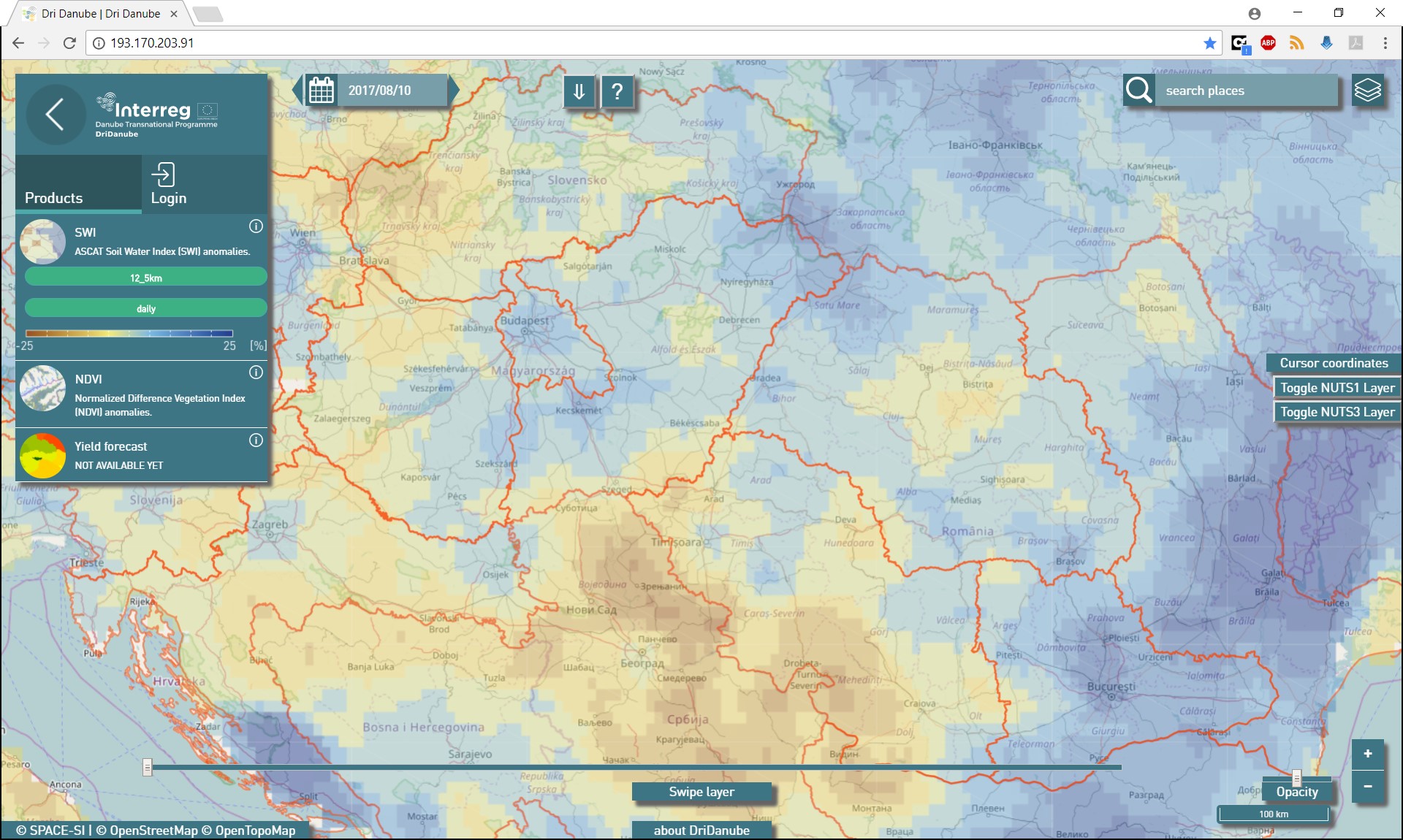DriDanube - Drought User Service - an innovative tool for drought management
03-10-2017
How will the DriDanube project improve capacity of the Danube region for drought emergency response in practice? What will remain after the project ends that would enhance our preparedness for drought management?
We are developing an innovative and interactive tool, The Drought User Service (DUS), which will enable more accurate and efficient drought monitoring and early warning for the entire Danube region. It will include a set of Earth Observation data from a range of operational remote sensing satellites, which are processed into ready-to-use drought information, available to the general public with a web-browser interface. With this service, the operational day-to-day work of national authorities, and end users such as farmers or water managers, will be improved in all phases of drought-related disaster management (from monitoring, forecasting and evaluation to response).

Figure 1: Simplified Drought User Service scheme
The available data product catalogue will provide several products generated from satellite data, e.g. surface soil moisture, vegetation status, and maps with a forecast of the expected agricultural yield. The products will be pre-processed by the DriDanube project partners and provided on a daily to weekly basis in order to map dynamic drought events. The inspection of the products will be done via an easy-to-use web-interface (see Figure 2). Furthermore, the interface allows to overlay auxiliary map layers like OpenStreetMap or administrative boundaries.

Figure 2: Prototype of the Drought User Service (DUS) interface
The Drought User Service is the main output of the DriDanube project (Work Package 3), where the work is shared between the partners from Austria and Slovenia, each of them experts in the field of Earth Observation.
The “Earth Observation Data Centre for Water Resources Monitoring GmbH” (EODC), located in Vienna/Austria, is an international private-public partnership specialised in fostering the use of “Big Data” in Earth Observation. It manages and operates a virtualised, distributed data centre with access to powerful high-performance computing infrastructure and satellite datasets in the petabyte scale. For DriDanube, EODC provides the virtual resources for the Drought User Service and acts as work package leader. More information on available Data, Infrasctructure and Platform as Service can be found at https://www.eodc.eu/.
The “Vienna University of Technology” (TU Wien) is a renowned educational institution with more than 29.000 students and 4.800 staff in Vienna/Austria. The Remote Sensing research group of the Department for Geodesy and Geoinformation is specialised in the use of active (scatterometers, SARs) and passive (radiometers) microwave sensors for global monitoring of soil moisture, surface water, and other dynamic hydrologic parameters. TU Wien’s soil moisture products are used by several thousands of users from research, public, NGO and private sectors. The DriDanube project is beneficial to TU Wien’s research goals of developing and maintaining fully operational earth observation based products such as the soil moisture content. Find more at https://geo.tuwien.ac.at/.
The “Centre of Excellence for Space Sciences and Technologies” (SPACE-SI) in Ljubljana/Slovenia has been established by a consortium of academic institutions, high-tech SMEs and large companies in order to benefit from the advantages of small satellite technologies and applications in Earth observation, meteorology and astrophysics. The remote sensing department is active in developing microsatellites and cameras, as well as maintenance of ground stations for satellite communication and testing of satellite components. The long-term goal of SPACE-SI is to become the leading data archive and processing centre for Copernicus data and for other publicly available Earth observation data in the Western Balkans. See http://www.space.si/en/ for more information.

EODC Forum – presentation of the DUS by WP3 project partners, May 2017, Vienna
